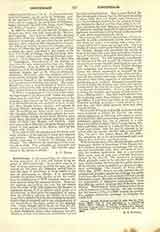

Concubinage, at the present day, the state, more or less permanent, of a man and woman living together in illicit intercourse. In its strict sense it is used of those unions only in which the man and the woman are free from any obligation arising from a vow, the state of matrimony or Holy orders, or the fact of relationship or affinity; it is immaterial whether the parties dwell together or not, the repetition or continuance of illicit relations between the same persons being the essential element. However, the meaning conveyed by the term has not always been the same; in the Old Testament, for instance, a legitimate spouse, if of an inferior social grade, or a bondwoman, is often given the appellation of concubine, not to call in question the validity of her marriage, but to indicate that she did not share in her husband’s rank or property nor in the administration of the household to the same extent as the principal wife. From Genesis, xxi, 9-14, we see that her dismissal and that of her children was permissible. But in those Scriptural times, when polygamy was permitted or at least tolerated, such a concubine was not the only marriage partner. Thus Lia and Rachel, the first two spouses of Jacob, had the full social standing of wives, while Bala and Zelpha, both bondwomen, were his concubines, married for the purpose of bearing children for Rachel and Lia (Gen., xxx, 3, 9, 13). Rere, therefore, the main difference between the state of legitimate marriage properly so called and that of legitimate concubinage is to be found in the disparity of rank which characterized the latter.
The meaning of the term in Roman law, and consequently in early ecclesiastical records and writings, was much the same; a concubine was a quasi-wife, recognized by law if there was no legal wife. She was usually of a lower social grade than her husband, and her children, though not considered the equals of those of the legal wife (uxor) were nevertheless termed natural (naturales) to distinguish them from spurious offsprings (spurn). For this legitimate concubinage the Roman law did not require the intention of the two parties to remain together until death as man and wife; the Lex Julia and the Papia Poppaea allowing both temporary and permanent concubinage. The former was always condemned as immoral by the Church, who excluded from the ranks of her catechumens all who adopted this mode of living, unless they abandoned their illicit temporal, or converted it into lawful permanent, wedlock. Permanent concubinage, though it lacked the ordinary legal forms and was not recognized by the civil law as a legal marriage, had in it no element of immorality. It was a real marriage, including the intention and consent of both parties to form a lifelong union. This the Church allowed from the beginning, while Pope Callistus I broke through the barrier of state law, and raised to the dignity of Christian marriage permanent unions between slave and free, and even those between slave and slave (contubernium).
The Council of Toledo, held in 400, in its seventeenth canon legislates as follows for laymen (for ecclesiastical regulations on this head with regard to clerics see Celibacy of the Clergy): after pronouncing sentence of excommunication against any who in addition to a wife keep a concubine, it says: “But if a man has no wife, but a concubine instead of a wife, let him not be refused communion; only let him be content to be united with one woman, whether wife or concubine” (Can. “Is qui”, dist. xxxiv; Mansi, III, col. 1001). The refractory are to be excommunicated until such time as they shall obey and do penance.
With the destruction of the Roman Empire and the consequent decline of knowledge of the Roman law, its institution of legitimate concubinage fell into disuse, and concubinage came more and more to have only the modern significance, that of a permanent illicit union, and as such was variously proceeded against by the Church. The clandestine marriages which gradually came to be tolerated in the Middle Ages, as they lacked the formality of a public sanction by the Church, can be considered as a species of legitimate concubinage. The Council of Trent (1545-1563), Sess. XXIV, chap. i, not only renewed the old ecclesiastical penalties against concubinage, but added fresh ones, also forbade and rendered null and void all clandestine unions, thus forever doing away with even the appearance of legitimate concubinage. From that time the modern invidious idea of the term alone obtains. The decrees of Trent, however, were in force only in countries strictly Catholic; the new marriage law (Ne temere) of Pius X (1908) extends the prohibition against clandestine marriages to Catholics the world over.
H. A. GAYNOR

